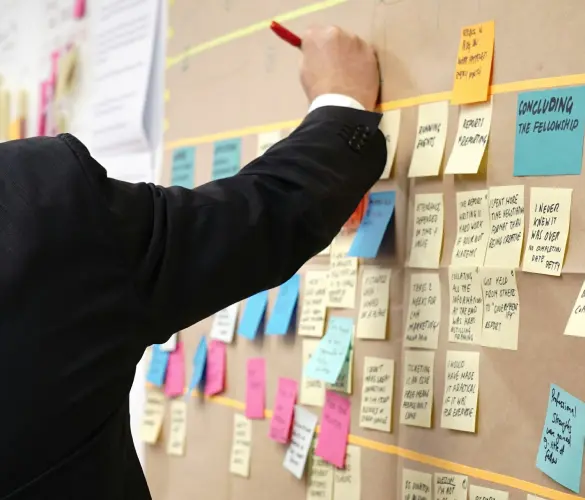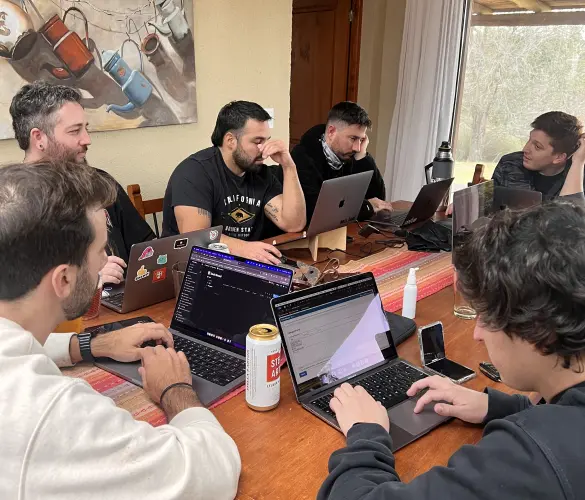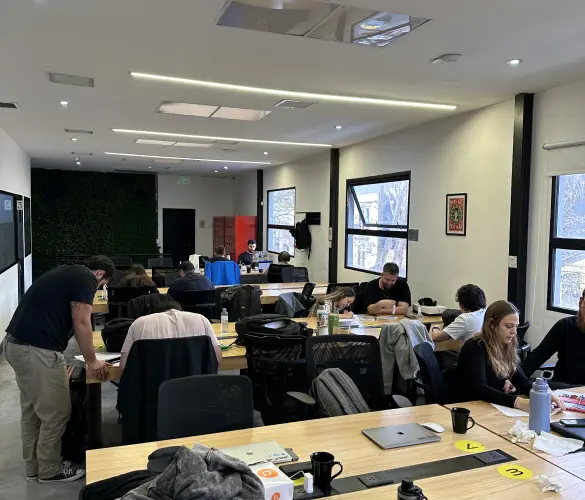Establishing and executing an ongoing WordPress maintenance protocol requires clear communication and planning. When these elements are missing, unintended consequences like operational problems, downtime, and miscommunication with customers can lead to dissatisfaction.
A recent project with Leerink Partners, a healthcare investment bank, helped us learn the importance of a well-defined maintenance protocol for providing certainty about response times, improving time management, and making communication with clients more transparent.
Based on our experience in this project, we developed a protocol that improved the relationship with our clients and optimized our internal processes for managing website maintenance ahead of future projects.
The Challenges that Led to a WordPress Maintenance Protocol
Before implementing the protocol, Leerink faced challenges that hindered the clarity and efficiency of its website maintenance. Among the most critical issues were:
- Uncertain response times. Leerink did not have a clear framework for how long it would take to perform maintenance tasks.
- Inefficient communication. Without well-defined channels, messages and requests were scattered across platforms, reducing efficiency.
- Misaligned expectations. The communication issues led to Leerink and our agency being misaligned about how to manage project tasks and hours.
The Solution: A WordPress Maintenance Protocol
To manage these inefficiencies, we created a WordPress maintenance protocol to guide our maintenance tasks during our Leerink Partners project and beyond.
The main focus was to write down the already established WordPress maintenance processes and find a clear way to communicate them to the customer.
To create the protocol, we needed to identify Leerink’s needs and create a process that fulfills them.
Our first step was to hold internal meetings to define how to handle situations such as after-hours emergencies and complex maintenance tasks requiring more dedication than usual.
Once we had defined Leerink’s needs and how to approach them, we structured the protocol in writing. These documents clearly established team responsibilities, response times, communication channels, and monthly hours dedicated to maintenance.
The tools we used for this process were Notion for document planning, Asana for tracking tasks, and Harvest for time monitoring.
Components of a WordPress Maintenance Protocol
Our WordPress maintenance protocol is designed to ensure the website’s stability, security, and ongoing performance.
Each component targets a specific element of WordPress maintenance tasks and the communication we must maintain with the client during each.
Below is a breakdown of the most important component of the protocol.
Clearly Defined Communication Channels
It is critical to establish clear communication channels to ensure efficient collaboration between teams. These are the main channels we establish with our clients.
- A communication app. You should agree with your clients on a platform to use for daily requests and coordination of maintenance activities. It could be Microsoft Teams, Slack, or any other you agree on.
- Emails for emergencies. An email address where the client can send messages during emergencies like unexpected issues that threaten the site’s stability or performance.
Additionally, it’s important to clarify expected response times, e.g., 30 minutes to 2 hours during business hours, so the customer knows what to expect.
A Dedicated Team
Assigning a specific team to the maintenance project, including a developer, QA analyst, and project manager, ensures efficient workflow and clear communication.
It helps clients understand who the main point of contact is and assures them that they know who is working on their site and what their relevant experience is.
A Process to Request WordPress Maintenance
Clearly defining how the customer can make maintenance requests is essential for efficient management. When creating a maintenance protocol, specify the platform where customers will make maintenance requests.
You could use Asana, Jira or Trello to host and track these tasks.
A Testing and Deployment Plan
It is critical to explain the development and deployment process to the client so that they know how we work with each site ticket.
For example, you explain to clients that all changes must first be applied in a staging environment, where the team can perform extensive testing without the risk of causing issues on the live site.
Additionally, establish specific days and times for production deployments, such as Monday through Thursday mornings. This structure ensures there is sufficient time to resolve any issues that arise without affecting critical operations.
Protocols for Emergencies Outside Working Hours
Create a protocol for handling after-hours emergencies so the client is clear on the process to follow.
A Maintenance Agreement
The protocol should clearly define what services are included within the maintenance agreement to avoid misunderstandings. Maintenance services may include:
- WordPress and plugin upgrades, as well as post-upgrade troubleshooting.
- Regular security scans.
- Monthly SEO and performance audits.
- Developing new features or enhancements if there are enough hours available.
A Protocol for the Development of New Features
It is essential to have a clear process for the client to request new functionalities or enhancements to the site. Some of the elements that your protocol for new features should include are:
- An analysis of requirements. Each request must be evaluated to determine its complexity and the impact it will have on the site.
- An estimation of work hours. Depending on the time available, determine whether the team can deploy the feature or if it will require additional hours.
- An approval from the client. Provide an initial estimate to the client, and if the team requires additional hours, confirm approval with the client before proceeding with development.
Creating a WordPress Maintenance Protocol Improves Efficiency and Client Relationships
Implementing a structured protocol brought multiple benefits for clients and our agency:
- Improved client-team relationship. Clear expectations and a structured process improve communication and project management, reducing misunderstandings and increasing client satisfaction.
- Fewer incidents. Proactive security and performance monitoring allow the detection of problems before they seriously affect the site. This approach minimizes downtime and improves the end-user experience.
- More efficient time management. Implementing a ticketing system and tracking tasks with Asana and Harvest greatly optimized how we use our project hours. It also improves transparency for both parties and avoids overloading the team with unplanned work.
A well-designed maintenance protocol optimizes a website’s technical management and improves customer relations by establishing clear processes and realistic expectations.
The Leerink project gave us the opportunity to structure a maintenance system that ensures stability, security, and ongoing performance while maintaining smooth communication with our clients.
If you found this post useful, read our blog and developer resources for more insights and guides!
Related Articles

Business / 12 min read
Business / 12 min read
How to Take on More WordPress Development Projects While Maintaining Quality
As a digital agency that provides WordPress services, your job is to take on as many projects as possible while maintaining the highest quality. This is easier said than done…
Read More
Business / 9 min read
Business / 9 min read
How to Choose a WordPress Development Agency to Scale Your Projects?
When your agency starts to scale, you may decide that a big part of your expansion will be providing WordPress services. If that's the case but you don't have an…
Read More
Business / 7 min read
Business / 7 min read
How to Optimize Time and Resources in WordPress Projects
WordPress agencies need to optimize and human resources use in order for their services (development, QA, design, etc.) to be profitable. They need to plan these projects very thoroughly to…
Read More
Business / 11 min read
Business / 11 min read
How WordPress Outsourcing Can Help Scale Your Agency
WordPress development outsourcing is becoming more frequent and affordable every day, helping global digital agencies of all sizes scale their services without the long-term investment of hiring an in-house team.…
Read More
Business / 8 min read
Business / 8 min read
What Is a White Label WordPress Development Agency?
A white label WordPress development agency is a company of WordPress developers, QA analysts, and project managers who provide outsourced services to digital agencies that lack a development team. Importantly,…
Read More
